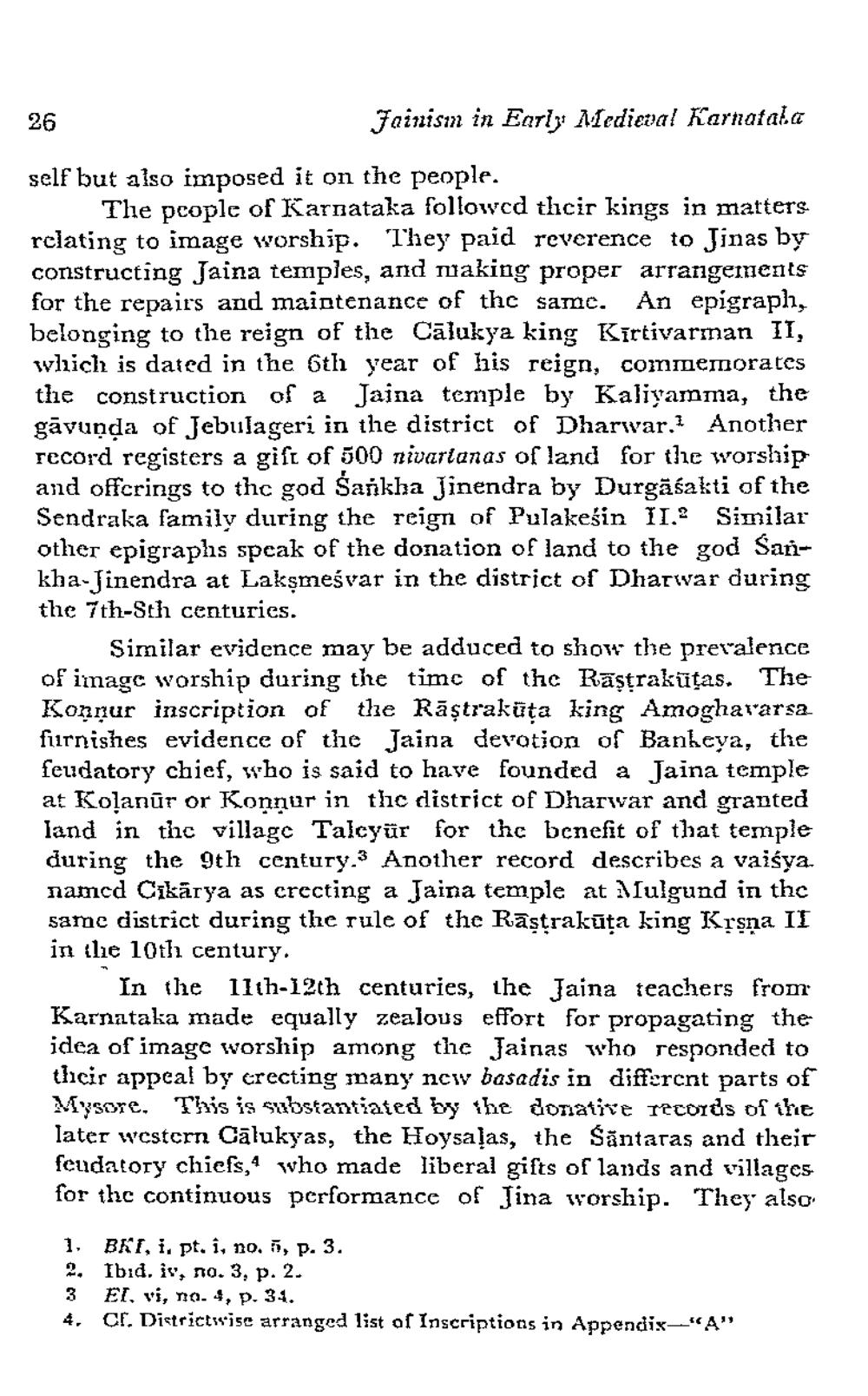________________
26
Jainism in Early Medieval Karnatala
self but also imposed it on the people.
The people of Karnataka followed their kings in matters relating to image worship. They paid reverence to Jinas by constructing Jaina temples, and making proper arrangements for the repairs and maintenance of the same. An epigraph, belonging to the reign of the Cālukya king Kirtivarman II, which is dated in the 6th year of his reign, commemorates the construction of a Jaina temple by Kaliyamma, the gāvunda of Jebulageri in the district of Dharwar.1 Another record registers a gift of 500 nivarianas of land for the worship and offerings to the god Sankha Jinendra by Durgāśakti of the Sendraka family during the reign of Pulakeğin 11.Similar other epigraphs spcak of the donation of land to the god Sankha-sinendra at Lakşmeśvar in the district of Dharwar during the 7th-Sth centuries.
Similar evidence may be adduced to show the prevalence of image worship during the time of the Raştrakūtas. The Konnur inscription of the Rāştrakūta king Amoghararsa furnishes evidence of the Jaina devation of Banbeya, the feudatory chief, who is said to have founded a Jaina temple at Kolanūr or Koņņur in thc district of Dharwar and granted land in the village Talcyür for the benefit of that temple during the 9th century.3 Another record describes a vaisya. named Cīkārya as crecting a Jaina temple at Mulgund in the same district during the rule of the Rāstrakūta king Kısna II in the 10th century.
In the 11th-12th centuries, the Jaina teachers from Karnataka made equally zealous effort for propagating the idea of image worship among the Jainas who responded to their appeal by crecting many new basadis in different parts of Mysore. This is substantiated by the donative records of the later western Cālukyas, the Hoysaļas, the Săntaras and their feudatory chicfs, 4 who made liberal gifts of lands and villages for the continuous performance of Jina worship. They also
1, BKI, i. pt. i, no. 1, p. 3. 2. Ibid. iv, no. 3, p. 2.
EI, vi, no. 4, p. 34. 4. Cr. Districtsisc arranged list of Inscriptions in Appendix-"A"




